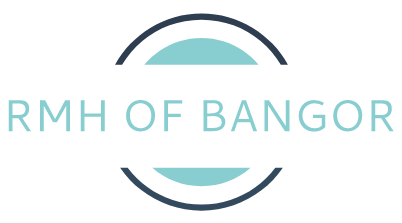Improving employee performance: it’s a goal that nearly every company wants to accomplish. But how do you know if you are really making employees’ jobs easier-or if it’s just an illusion? Apparently, companies are increasingly on the lookout for new ways to improve employee productivity and engagement. Technology has been a boon for HR and employee management, allowing mobile access to work emails, calendars, and tasks, among other perks. One such tool is gamification, which mimics the mechanics and rewards of video games to help employees develop work skills, foster collaboration, and boost productivity.
Similarly, to improve employee productivity, companies should invest in ensuring that the work culture and workplace are conducive to peak performance. This involves fostering an environment that values open communication, recognizes and rewards achievements, and promotes a healthy work-life balance. Furthermore, in order to improve the productivity of the employees, companies can invest in the maintenance of the office and provide ergonomic furniture to boost their morale. Keep in mind that by cultivating a positive work culture, companies can inspire a sense of purpose and job satisfaction among employees, ultimately contributing to increased productivity and engagement.
That said, now, we can shift the focus to more intricate ways of boosting employee productivity. The first step in increasing employee performance is recognizing when employees need it, and then determining how they can improve. With a company as large as Sony, it can be difficult to know which departments and employees are underperforming. However, certain signs indicate the need for employee performance review. When you have the data, you can start training the employees who need it the most. The following training techniques can help your organization streamline its training process while engaging your employees.
Facilitate Interactive Training
Interactive training is growing in popularity and for a good reason. It allows participants to collaborate, share knowledge, make connections, exchange ideas, and work on common problems. When employees receive training, they are able to grow and develop professionally.
The downside of this is that it can be very challenging to design and facilitate a successful interactive training session, especially when trying to innovate. Nonetheless, there is a way you can work around this obstacle – have your employees take this workplace personality test so that you can grasp where each worker’s forte lies. Once you have an understanding of how each individual thinks, you could frame teams based on their abilities to target higher levels of productivity.
Adding interactive elements into training sessions, sometimes referred to as “gamification” or “workplace intelligence,” can significantly enhance employee engagement. By incorporating interactive activities, quizzes, and simulations, employees are more likely to be actively involved in the learning process, making the training more effective and enjoyable.
Furthermore, employers can consider integrating a program for diversity training with the assistance of Cross Cultural Consulting companies, which can enrich the interactive training experience as these initiatives can help employees become more aware and respectful of the diverse cultures and backgrounds present in the workplace.
Overall, combining interactive training with the insights from workplace personality tests and diversity training can result in a well-rounded and impactful learning experience for employees. By fostering an inclusive and collaborative work environment, businesses can empower their workforce and drive productivity to new heights.
Release Regular Learning Content
Content creation is a significant part of most businesses marketing strategies. However, many marketers only focus on creating content meant to gain new customers. There’s another valuable type of content that can be-and should be-incorporated into any marketing plan: regular, ongoing learning content. It outlines exactly what you need to get done and when you will do it; it acts as a blueprint in which you can organize your thoughts and ideas. With the help of a comprehensive LMS for your company, you can even curate modules of learning and enable employees to take tests to gain certifications in different skills. You can form a team of trainers and assessors who would need to learn crucial elements like the principles of assessment, the four rules of evidence, and more, for effective evaluations and grading.
Identify and Solve Poor Performance Issues
Poor performance problems typically come in two forms: technical or process problems. Technical issues are typically hardware related, such as hardware defects, software conflicts, or inadequate hardware performance. On the other hand, process problems include poor work habits, poor communication, unclear goals, or a simple lack of motivation. Regardless of the source of the problem, a successful resolution depends on understanding the cause and remedying the underlying problem. A business performance issue can surface in many forms, so the first step to solving it is identifying the source. Needless to say, if there is an issue, it is highly likely that someone within the team has identified the problem.
Allow Collaborative Learning
Collaborative learning is a teaching strategy that incorporates the entire team. Teams brainstorm to come up with ideas, use those ideas to express their learning, and then build their projects to create the end product collectively. However, this can be challenging, as participants in collaborative learning sessions must work quickly and cohesively.
Recognize and Reward Employees
Recognize and reward employees. It’s a phrase we often hear. But do we understand what recognition is and how important it is for employee engagement? We often see examples of recognition in the form of awards in front of an audience or a special reward like a company party or a nice lunch. All of these things are great, but they can’t replace the most important type of recognition: showing recognition and appreciation personally.
However, employee recognition doesn’t have to fall solely on managers. Even small companies can take advantage of quick, informal ways to recognize employees. For example, praise employees with a handwritten thank-you note when they complete projects successfully. Or, if employees go the extra mile on a job, reward them with a discount or free lunch.


